A speedlight is an on-camera flash you place on your camera’s hot shoe. It provides light to your images, allowing you to nail the exposure.
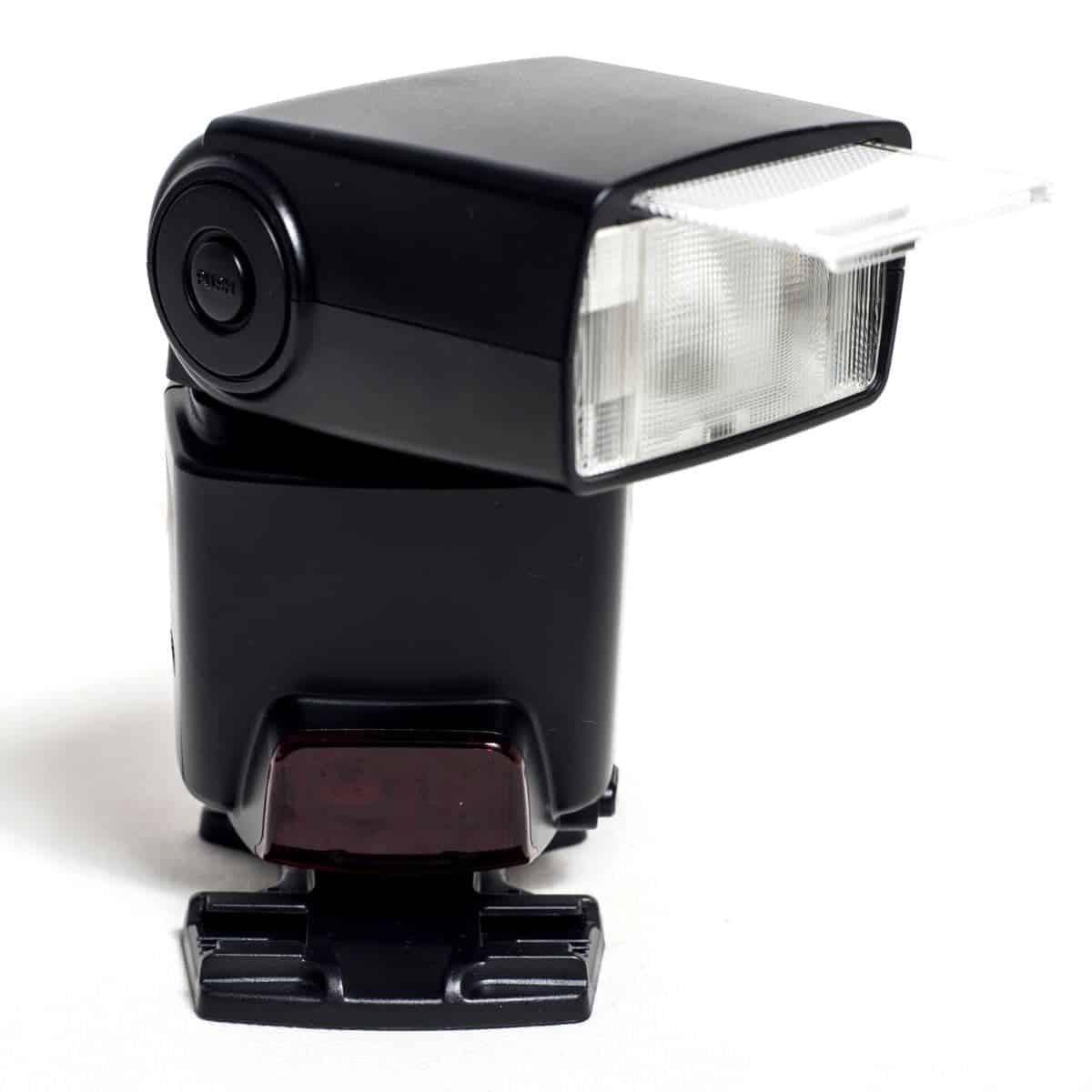
A speedlight is an on-camera flash that adds light in low-light conditions. It also has other names, such as speedlite, hot shoe flash, or flashgun.
On-camera flash dates back to the 1930s with the flash bulb. Since then, you could take photos regardless of the natural light available.
The small tool that beats carrying around an artificial lighting kit, which is heavy.
It also provides more and better light than the pop-up flash in your camera.
The following covers everything you need to know about buying and using a speedlight.
What’s a speedlight?
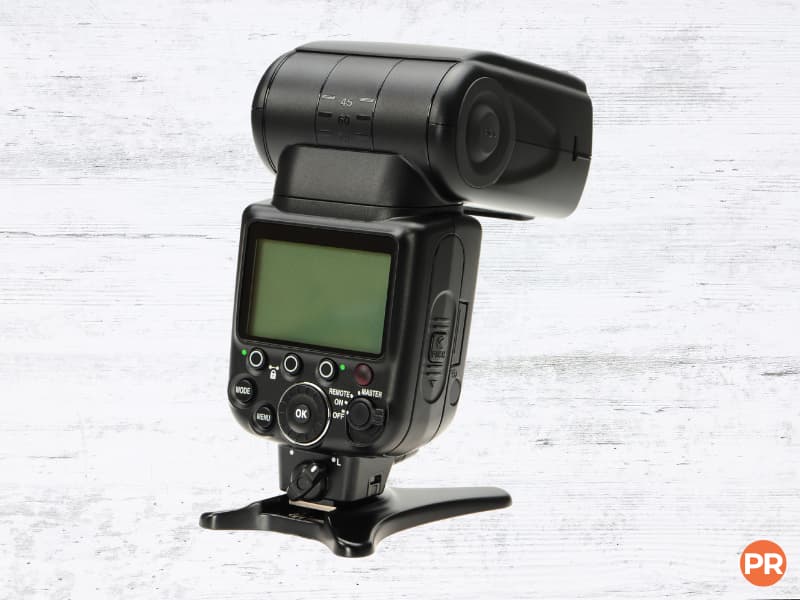
A speedlight is an on-camera flash that provides light to achieve balance in the exposure.
It’s helpful in low-light conditions, such as indoor or night photography.
A speedlight also allows you to illuminate a subject with the sun behind them. It ensures the portrait doesn’t become a silhouette shot.
The on-camera flash sits on the hot shoe or a light stand.
If you place it on a light stand, you can adjust the angle and fire it remotely.
Most speedlights also use batteries, giving you the flexibility to shoot anywhere.
When shopping for a speedlight, you’ll see it under different names.
For example, Canon calls theirs a Speedlite, while Nikon calls it a Speedlight. Both pieces of equipment refer to on-camera flashes.
It’s a tool accessible to beginners and professionals, as you’ll find a wide range of prices.
It’s one of the best accessories because it eliminates camera shake, noise, and loss of details.
A speedlight is a must-have tool for taking your photography to the next level.
Why on-camera flash is better than the pop-up flash
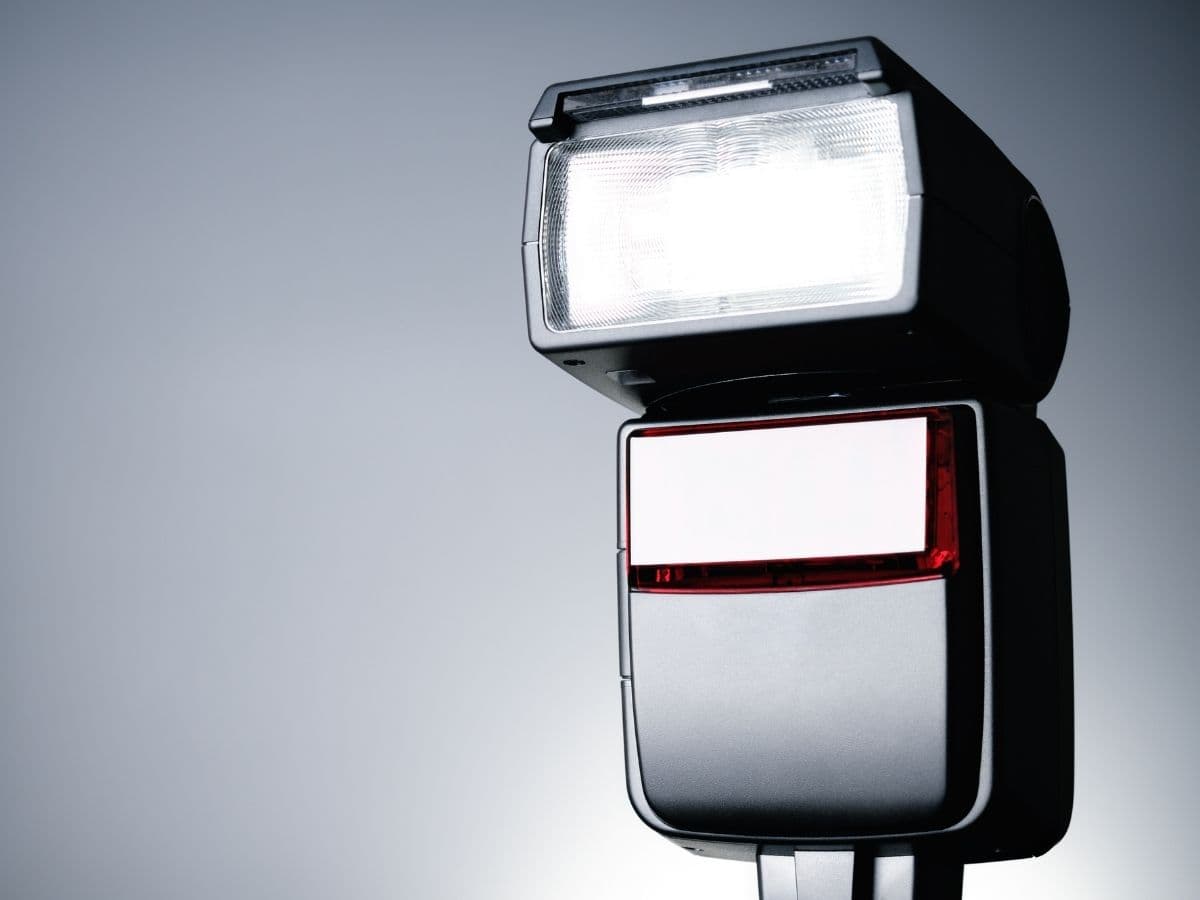
Adequate lighting is essential for stunning photographs.
Most DSLR and mirrorless cameras have a pop-up flash, but they’re not enough.
A built-in flash is small, weak, and positioned right above the lens. It causes the red-eye effect in portraits.
A speedlight is an optimal choice over the pop-up flash. It allows you to use a lower ISO and narrower aperture.
You can also change the angle and intensity of the light source.
An on-camera flash gives you options. You can bounce the light off the wall, diffuse or change it.
If you want to capture beautiful photos, get a speedlight.
Aside from better pictures, a speedlight uses batteries, which preserves your camera’s battery.
You can bring an on-camera flash anywhere. It’s an excellent way to upgrade your pictures.
Use it instead of the built-in pop-up flash.
What you need to know about buying a speedlight
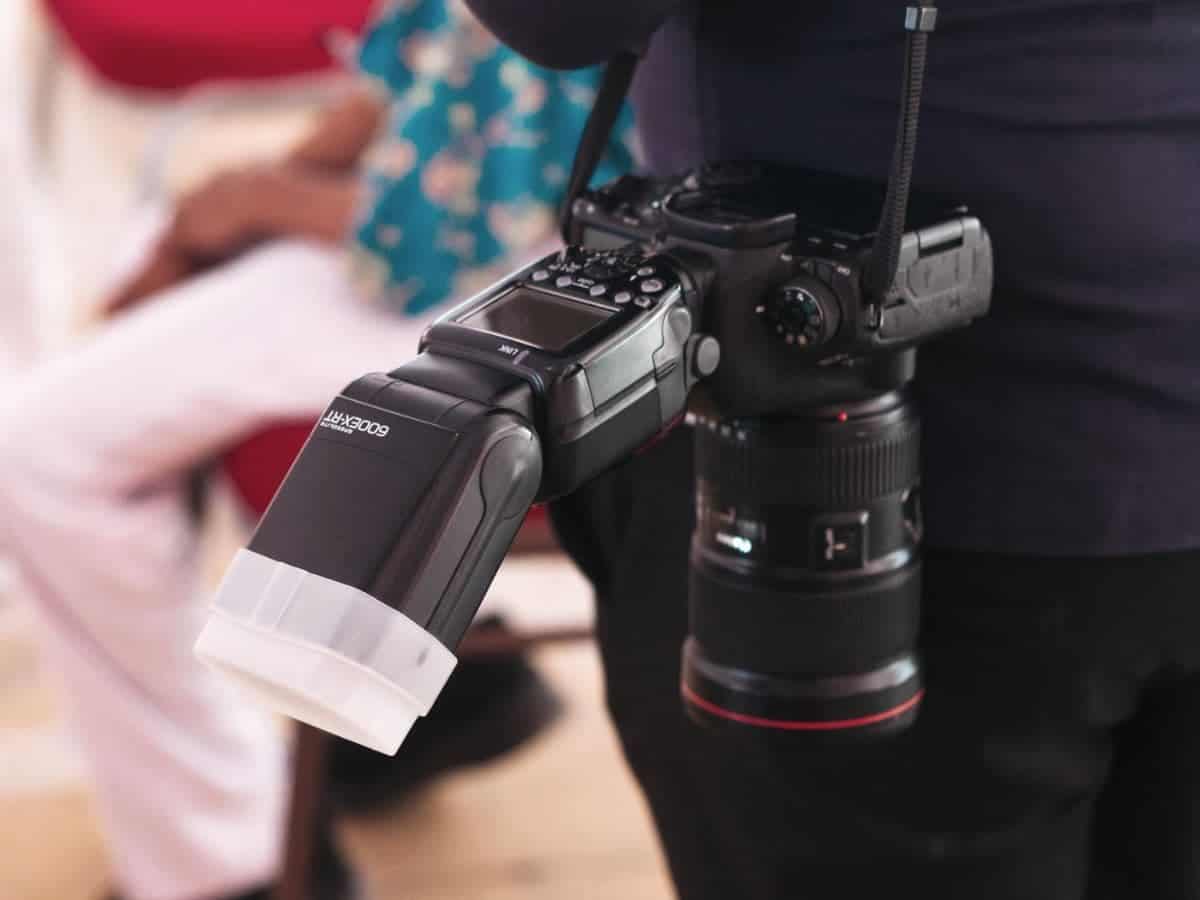
Before you buy a speedlight, understand the essential aspects and features of a quality one.
There are many brands and on-camera flashes available. Finding the right one can be confusing.
The following covers everything you need to know about buying a speedlight.
Through-the-Lens (TTL) or manual
The two main types of speedlights are through-the-lens (TTL) and manual.
TTL speedlights adjust the light using the camera’s metering system.
It checks the ambient light, exposure, flash power, and subject distance. Then, it provides the ideal flash output.
It’s like automatic mode on a digital camera.
A TTL flash is efficient and accurate most of the time. If the light is changing, it may struggle. You may need to add compensation.
A manual flash thrives in changing light situations.
When using one, change your camera’s aperture and ISO settings depending on the scene.
You also control the flash output by adjusting the power in fraction increments. A higher number means more power.
Manual flashes are cheaper than TTL flashes due to simplicity and fewer costs to build.
If you have to choose one, buy a TTL speedlight.
The slight risk of it not providing a balanced exposure is slim. Also, most TTL flashes can shoot in manual mode.
When shopping for an on-camera flash, check the description. If it doesn’t say TTL, it’s most likely a manual.
You can also check the hot shoe. A manual speedlight has one central firing pin.
Another factor to note is manufacturers have proprietary TTL systems.
Canon calls it e-TTL, and Nikon calls it i-TTL. Both refer to the same type of on-camera flash.
Flash recycle time
Recycle time or rate is how long it takes the on-camera flash to recharge the capacitors to be ready to fire.
Most speedlights have recycling times ranging from one to six seconds.
Faster flash recycling times mean more efficiency. A quick recycling time is essential if you shoot sports or action photos.
When shopping for a speedlight, the recycling time shows a range.
The smaller number is how long it takes before the flash can fire again with its lowest power setting.
The higher number is the time before firing with full power.
The recycling time for the maximum output is the most important. Aim for the shortest maximum light output time possible.
Again, this is essential if you need speed. If you shoot portraits, the recycling time is less crucial.
High-speed sync (HSS)
The fastest shutter speed your camera can use with flash is the sync speed.
The sync speed for most cameras is between 1/125 and 1/250.
A faster shutter speed will not capture light.
You may get black areas in the frame due to the shutter curtains being too close to each other.
Also, the flash duration is too short, and the fast shutter speed limits the sensor’s exposure to light.
The solution is high-speed sync. It allows you to use flash with faster shutter speeds.
High-speed sync is ideal if you want to balance the exposure while using a wide aperture.
Examples include shooting outside on a sunny day and using a wide aperture for bokeh.
Instead of a single light burst, high-speed sync sends quick light pulses. While your eyes can’t see it, the camera can.
It provides the sensor with an even distribution of light. It’s almost like continuous light.
The drawback to HSS is that it reduces the flash power output. But, it’s a small price to pay for the benefits of HSS.
You can also use HSS to freeze motion, but freeze mode will give you better results to avoid motion blur.
High-speed sync helps you capture beautiful and soft backgrounds in bright outdoor conditions.
How to use a speedlight
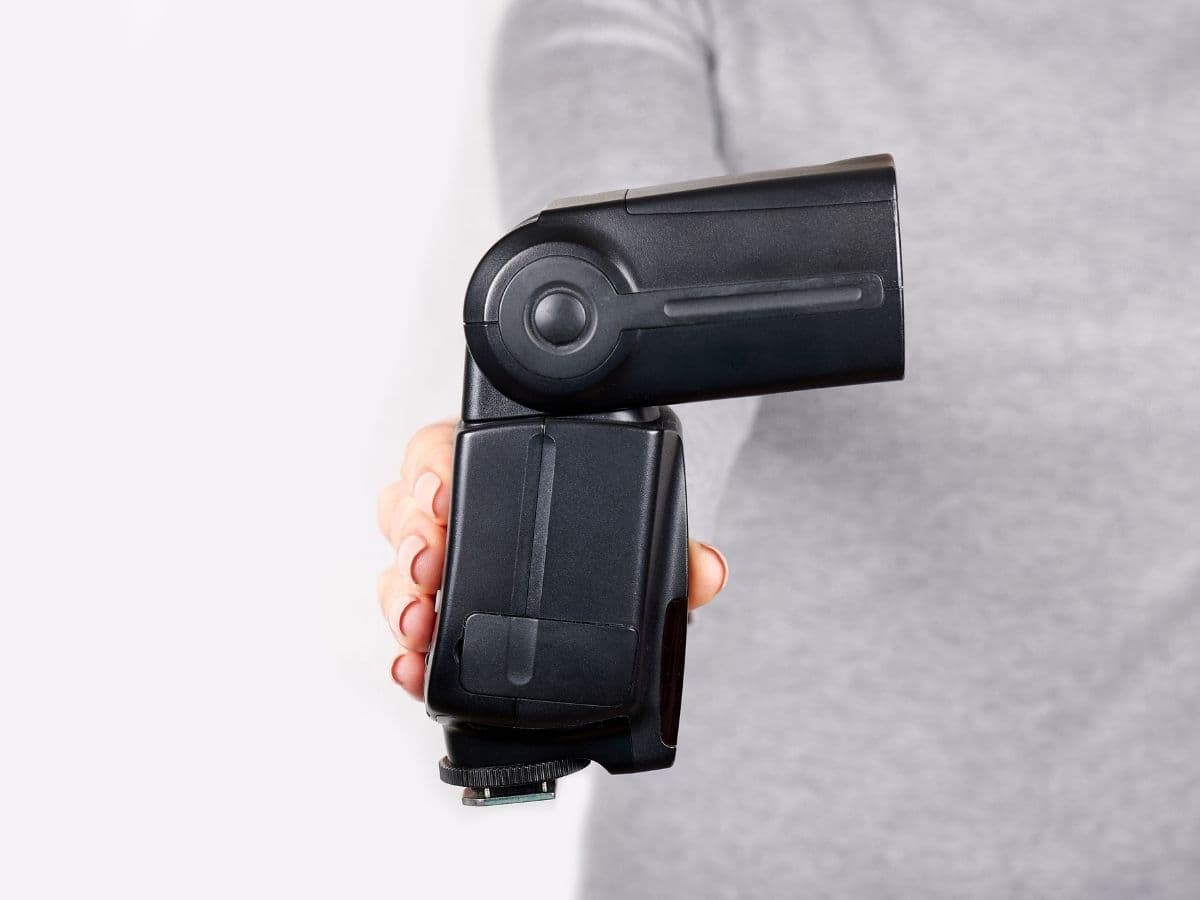
A speedlight can do wonders for your photography. Take the following steps to use an on-camera flash:
- Attach the speedlight to your camera’s hot shoe.
- Turn on the speedlight.
- Select the flash mode.
- Adjust your camera settings.
- Choose a direction to point the flash.
- Press the shutter to take the photo.
Set your camera to program mode and the on-camera flash to TTL metering if you’re new to photography.
It ensures that the camera and flash balance the exposure so you can focus on the composition.
If you want to venture out of program mode, switch to shutter priority. Use a shutter speed of 1/200 or the sync speed for your camera.
The camera will balance the aperture and ISO to achieve a balanced exposure.
If you want to use manual mode, set the aperture to f/8, shutter speed to 1/200, and ISO to 200.
The settings are an excellent starting point. You can make changes from there depending on the lighting situation.
Aside from mounting the speedlight on the hot shoe, you can put it on a light stand.
You can adjust the angle of the light and use a wireless flash trigger. It allows you to place the light anywhere.
Also, you can use any lighting pattern, such as Rembrandt or loop lighting.
Once you get the hang of using a speedlight, you can experiment with different techniques.
The following are accessories that some on-camera flashes have. You may need to buy the pieces separately.
- Diffusers to soften the light.
- A mini softbox to spread even lighting and reduce shadows.
- Color gels or filters change the color of the light.
- Bounce cards and reflectors reflect light.
- Grids make the light output area smaller to control the spread.
Without changing anything, using it on the hot shoe will take your pictures to the next level.
Frequently asked questions about on-camera flashes and speedlights
What’s the best brand for on-camera flashes and speedlights?
The best on-camera flash depends on your camera and budget. If you use a Canon, Nikon, or Sony camera and have a higher budget, stick with the manufacturer’s flashes. If you have a smaller budget and want a third-party manufacturer, Yongnuo and Neewer are excellent. If you have a higher budget and want top performance, Profoto offers the A1X, which has top-notch recycling speed.
Where should I point a speedlight?
Point the speedlight towards the ceiling or wall to create a softer light. If you point the speedlight at the subject, it will look harsher. But you can control the light intensity to make it softer.
Can a speedlight overpower the sun?
Yes, a speedlight can overpower the sun to illuminate your subject. Since a speedlight isn’t as strong as a large strobe, you must stay closer to your subject.
Conclusion
A speedlight allows you to shoot beautiful photos regardless of the lighting situation.
It also helps you freeze fast-moving subjects without blur.
If you want a portable light source that’s better than the built-in flash, get a speedlight.
It’s easy to use, affordable, effective, and versatile.
Related: Monochrome vs. Grayscale Photography
Featured image courtesy of Canva.
